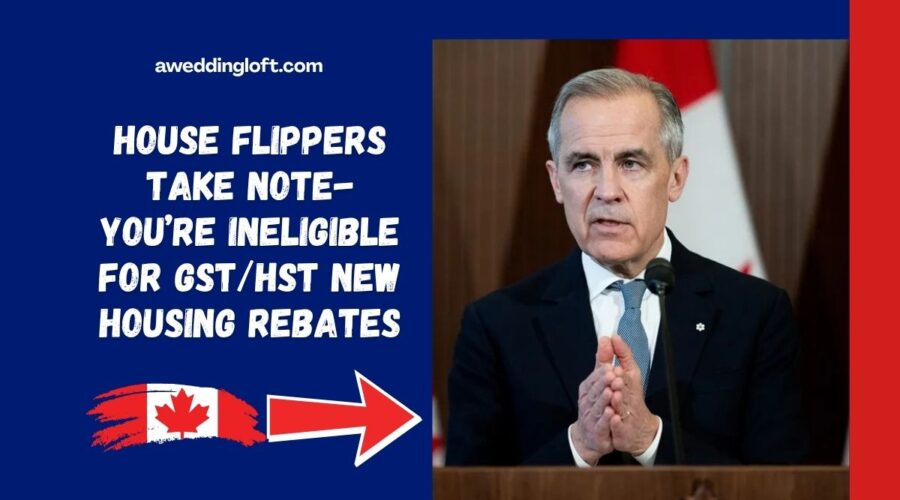House Flippers Take Note- You’re Ineligible for GST/HST New Housing Rebates
In March 2025, the Tax Court of Canada ruled on the case Ram v The King, 2025 TCC 49, where it dismissed the appeal by self-represented litigant Aneeta Ram. The case centered on the Canada Revenue Agency’s (CRA) denial of her claim for the GST/HST new housing rebates.
Background of the Case
In 2016, Ms. Ram and her associate, Pardeep Kumar, entered a joint agreement with a builder to purchase a pre-construction home priced at $287,000. According to Ms. Ram, this was an investment property, with both parties contributing equally.
By July 2018, the property was completed, and Ms. Ram subsequently filed for GST/HST new housing rebates amounting to $22,000.
Merely three months after taking possession, the property was resold for $439,000, a textbook house flip. Neither party nor their relatives occupied the home before this sale. Additionally, Ms. Ram did not report capital gains on this transaction.
In January 2020, CRA issued a notice of assessment disallowing the rebates. The notice was sent to the address listed on the rebate application—the property’s address. Unaware of this, Ms. Ram only learned of the assessment in January 2023 when CRA’s Collections Division contacted her to recover $28,000 (including $6,000 in accumulated interest).
Following an inquiry, CRA resent the original notice to Ms. Ram’s residential address in February 2023.
Arguments Raised by Ms. Ram
Representing herself, Ms. Ram presented four main arguments:
- She did not personally sign the rebate application, so she should not be held responsible.
- Since the house was purchased under a 50/50 partnership, she should not bear the full repayment.
- The original assessment notice was sent to an incorrect address, so she should not be liable for the interest.
- The assessment was issued over four years after her application, making it statute-barred.
Conditions for GST/HST New Housing Rebates
The Court reviewed the eligibility framework for these rebates, which includes both federal and provincial components (Ontario, in this case). The key conditions are:
- The buyer must purchase the home as their primary place of residence or for that of a relative.
- The buyer or their relative must be the first occupant of the property as a primary residence.
When multiple buyers are involved, all must meet these conditions collectively. Only one individual can claim the rebates.
In this case, neither Ms. Ram nor Mr. Kumar nor any relatives ever occupied the home. Therefore, the GST/HST new housing rebates were not applicable.
How the Rebate Application Works
Typically, the buyer signs the rebate application, then assigns the right to claim the rebate to the builder. The builder claims the rebate and credits the amount to the purchase price, reflected on the closing statement. This arrangement was used in Ms. Ram’s case.
Signature Dispute: It Doesn’t Matter
The rebate application bore Ms. Ram’s name, but she claimed the signature wasn’t hers, alleging Mr. Kumar signed without her consent. However, Mr. Kumar did not testify to support this claim.
The Court doubted Ms. Ram’s credibility, citing her evasiveness and selective disclosure of documents. An email from Ms. Ram to Mr. Kumar requesting that he pay half of the rebate liability without expressing surprise about the claim, m—further weakened her position.
Moreover, since Ms. Ram signed numerous documents during the home purchase and was aware that the purchase price was adjusted to reflect the rebate, the Court concluded that she had knowledge of the rebate application and was fully liable.
Partnership Liability Is a Civil, Not a Tax, Issue
The Court clarified that when multiple buyers are involved, only the person who claims the rebates is liable if the claim is unjustified. If Ms. Ram believes Mr. Kumar should share the liability, she must pursue this through civil court—the Tax Court cannot divide tax liability between parties.
Was the Address Incorrect?
Ms. Ram argued that the assessment was sent to an incorrect address—different from her income tax address. However, the Tax Court rejected this claim, noting that GST/HST rebates fall under the Excise Tax Act, not the Income Tax Act. It is common for taxpayers to have different addresses for different tax matters.
Moreover, the address used was the one provided on the rebate application, which is appropriate since the home was required to be occupied as a primary residence.
Is the Assessment Statute-Barred?
Even if the notice had been misdirected, the Court ruled that the assessment period was valid under exceptions for misrepresentation caused by neglect or wilful default.
Since Ms. Ram filed for a rebate she was not entitled to, this constituted at least neglect, if not deliberate action. Thus, the CRA’s assessment beyond the four-year window was legally permissible.
The Tax Court ultimately upheld the CRA’s decision, confirming that Ms. Ram was ineligible for the GST/HST new housing rebates and liable to repay the full amount with accrued interest.
The address used for the original notice was appropriate, and due to misrepresentation, the extended assessment period was valid. Ms. Ram now faces full repayment of the disallowed rebates.
FAQs
What are the key conditions for qualifying for the GST/HST new housing rebates?
To qualify, the buyer must acquire the home as a primary residence (or for a relative) and must be the first occupant after substantial completion.
Does it matter who signs the GST/HST rebate application?
No. If the application is made in your name and you had knowledge of the transaction, you are considered liable, regardless of who physically signed the form.
Can the Tax Court split repayment liability between joint buyers?
No. Tax liability for the rebates rests solely with the individual who claimed them. Any arrangement to split liability must be pursued through civil court.


Leave a Reply